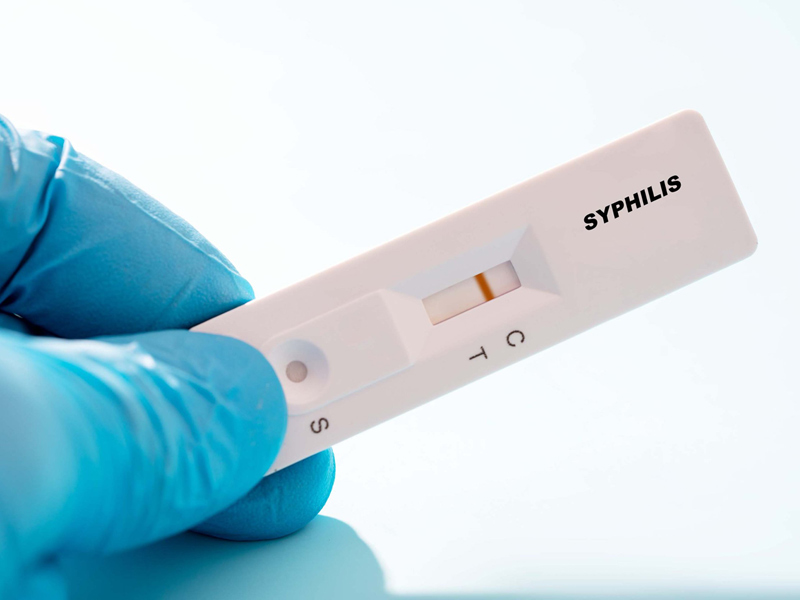USPSTF Final Recommendation
Screen Higher-risk Patients for Syphilis, Task Force Advises
October 13, 2022, 3:00 p.m. News Staff — All asymptomatic, nonpregnant adolescents and adults who are at increased risk for syphilis should be screened for infection, the U.S. Preventive Services Task Force said following a review of the latest evidence.

The recommendation, published Sept. 27 with an “A” grade, along with a final evidence review and evidence summary, reaffirms 2016 guidance. A separate recommendation published in 2018 calls for early screening for syphilis in pregnant patients.
“It is vital that people who are at increased risk for syphilis get screened so the infection can be treated before problems develop or worsen,” explained family physician Katrina Donahue, M.D., M.P.H., a member of the task force and professor and vice chair of research in the Department of Family Medicine at the University of North Carolina School of Medicine at Chapel Hill, in a USPSTF bulletin. “In the face of rising rates of syphilis, primary care professionals have an important role in helping to keep their patients healthy.”
Reported cases of syphilis have increased steadily in the United States over the past two decades, from 2.1 cases per 100,000 people in 2000 to 11.9 cases per 100,000 in 2019. While syphilis is easily curable if diagnosed early, it can cause blindness, paralysis, nervous system damage and other problems if left untreated.
Test Accuracy Varies With Disease Stage
Because the USPSTF previously determined that treatments for syphilis (such as parenteral penicillin G) are effective and well-established, treatments were not included in the evidence review. Instead, the task force investigated whether there was enough new and substantial evidence to change the 2016 recommendation, with a focus on risk assessment tools and the benefits and harms of screening.
The investigators found that test accuracy can vary based on disease stage. For detecting primary and late latent syphilis, common nontreponemal tests had a sensitivity between 61% and 78% for detecting primary and late latent syphilis, and between 85% and 100% for detecting secondary and early latent syphilis. Preferred treponemal tests (which detect antibodies to T. pallidum proteins) showed better sensitivity (82% to 100%) across the spectrum of the disease and better specificity (94% to 100%) for detecting primary syphilis.
Rapid point-of-care testing for T. pallidum antibodies can provide quick on-site results, but initial real-world data indicate that sensitivity may be low.
Although the investigators found that screening higher-risk patients for syphilis is the standard of care in the U.S., they recognized the need for additional research on a variety of related topics, including
- novel testing approaches,
- how to best identify who would benefit most from screening and
- optimal screening intervals.
Other Recommendations and Resources
In response to comments made on the draft version of the recommendation between Feb. 15, 2022, and March 14, 2022, the final recommendation includes more information on factors that cause disparities in syphilis prevalence among different patient populations, preferred screening tests, test performance of different screening tests and additional risk factors.
The task force linked to three new resources for clinicians and patients, including a National Academies of Sciences, Engineering and Medicine consensus report on sexually transmitted infections, a JAMA patient page on screening for syphilis and a JAMA podcast on the recommendation statement.
The task force has also posted screening recommendations for several other STIs, including chlamydia and gonorrhea, genital herpes, hepatitis B, hepatitis C and HIV, as well as a recommendation on behavioral counseling for all sexually active adolescents and for adults at increased risk for infection.